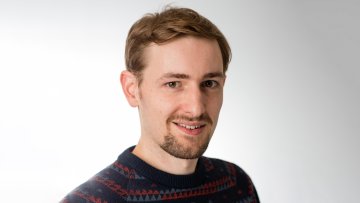14:15
CoHAs, vertex algebras and torus localisation
Abstract
Cohomological Hall algebras and vertex algebras are two structures whose origins are (at least in part) from physics. I will explain what these objects are, how the latter was related to moduli stacks by Joyce, and a theorem relating these two structures. The main tool is torus localisation, a method for "turning geometry into combinatorics", or rather a new formulation of it which works in the singular setting.
14:15
Purely inseparable Galois theory
Abstract
A field extension $F/K$ in characteristic $p$ is purely inseparable if for each $x$ in $F$, some power $x^{p^n}$ belongs to $K$. Using methods from homotopy theory, we construct a Galois correspondence for finite purely inseparable field extensions $F/K$, generalising a classical result of Jacobson for extensions of exponent one (where $x^p$ belongs to $K$ for all $x$ in $F$). This is joint work with Waldron.
14:15
Deformation uniqueness of Calabi-Yau metrics with maximal volume growth
Abstract
It is expected that complete noncompact Calabi-Yau manifolds are in some sense governed by their asymptotics at infinity. In the maximal volume growth case, the asymptotics at infinity are given by Calabi-Yau cones. We are interested in deformations of such metrics that fix the asymptotic cones at infinity. In the asymptotically conical case, Conlon-Hein proved uniqueness under such deformations. Their method is based on the corresponding linearized problem, namely the study of subquadratic harmonic functions. We generalize their work to the maximal volume growth case, allowing the tangent cones at infinity to have non-isolated singularities. Part of the talk is based on work in progress joint with Gabor Szekelyhidi.
14:15
The structure of mean curvature flow translators with finite total curvature
Abstract
In the mean curvature flow, translating solutions are an important model for singularity formation. In this talk, I will describe the asymptotic structure of 2D mean curvature flow translators embedded in R^3 which have finite total curvature, which turns out to be highly rigid. I will outline the proof of this asymptotic description, in particular focusing on some novel and unexpected features of this proof.
Departmental staff are reminded that prior approval is usually needed from the Head of Department before accepting outside appointments such as these. If you have any queries about this requirement, please contact the HR team: @email.
Oxford Mathematician James Newton has been awarded a UKRI (UK Research and Innovation) Future Leaders Fellowship.
14:15
Stability conditions for polarised varieties
Abstract
A central theme of complex geometry is the relationship between differential-geometric PDEs and algebro-geometric notions of stability. Examples include Hermitian Yang-Mills connections and Kähler-Einstein metrics on the PDE side, and slope stability and K-stability on the algebro-geometric side. I will describe a general framework associating geometric PDEs on complex manifolds to notions of stability, and will sketch a proof showing that existence of solutions is equivalent to stability in a model case. The framework can be seen as an analogue in the setting of varieties of Bridgeland's stability conditions on triangulated categories.
14:15
Higher rank DT theory from curve counting
Abstract
Fix a Calabi-Yau 3-fold X. Its DT invariants count stable bundles and sheaves on X. The generalised DT invariants of Joyce-Song count semistable bundles and sheaves on X. I will describe work with Soheyla Feyzbakhsh showing these generalised DT invariants in any rank r can be written in terms of rank 1 invariants. By the MNOP conjecture the latter are determined by the GW invariants of X.
Along the way we also show they are determined by rank 0 invariants counting sheaves supported on surfaces in X. These invariants are predicted by S-duality to be governed by (vector-valued, mock) modular forms.
Minimal surfaces, spectral geometry and homogenisation
Abstract
Free boundary minimal surfaces are a notoriously elusive object in geometric analysis. From 2011, Fraser and Schoen's research program found a relationship between free boundary minimal surfaces in unit balls and metrics which maximise the first nontrivial Steklov eigenvalue. In this talk, I will explain how we can adapt homogenisation theory, a branch of applied mathematics, to a geometric setting in order to obtain surfaces with first Steklov eigenvalue as large as possible, and how it leads to the existence of free boundary minimal surfaces which were previously thought not to exist.


